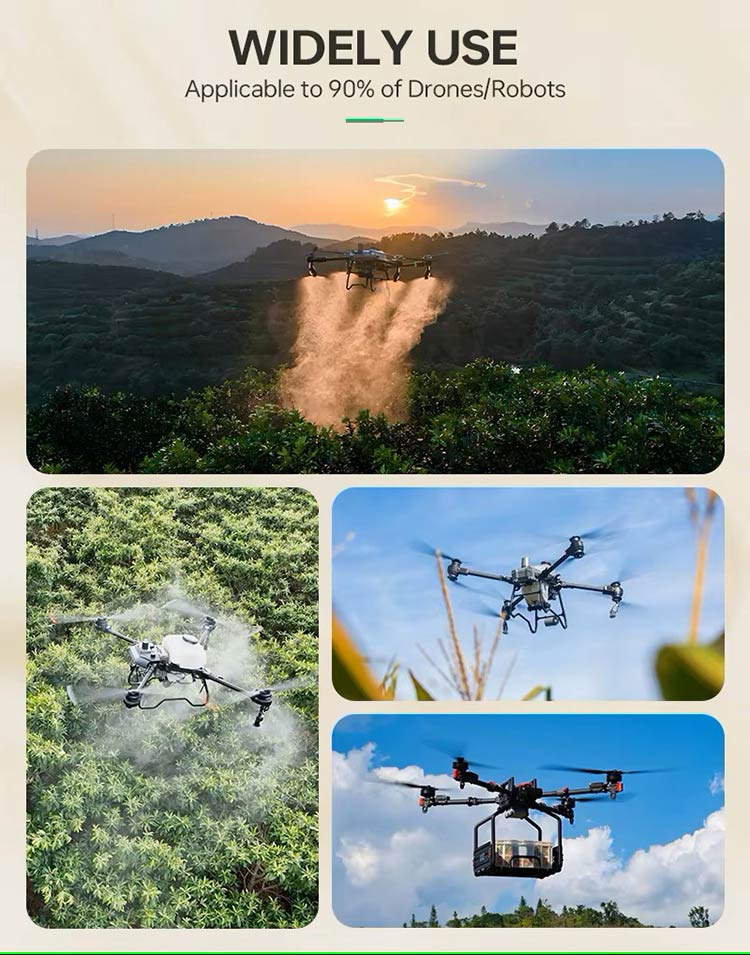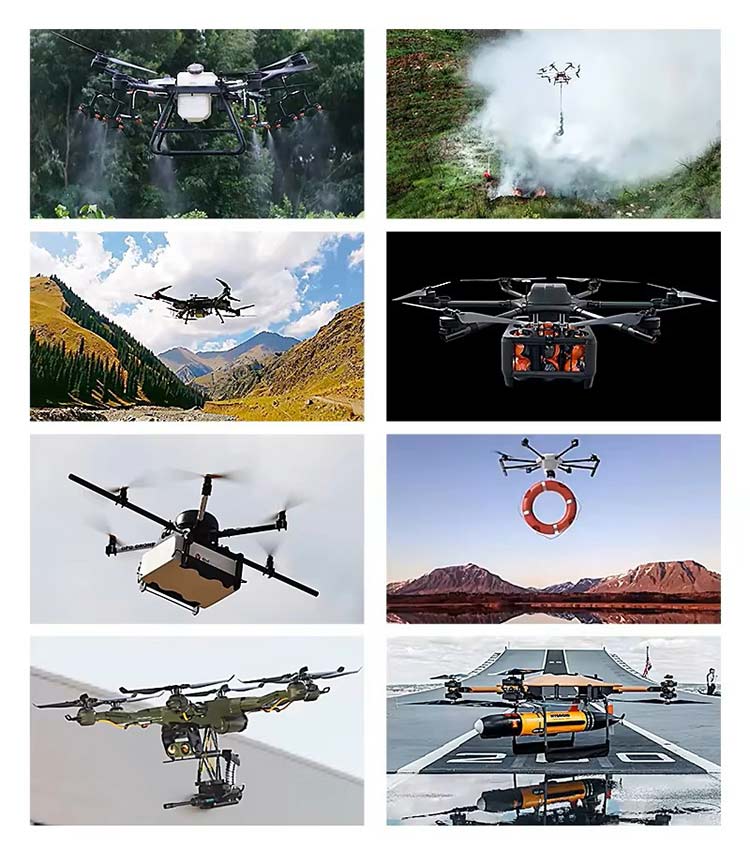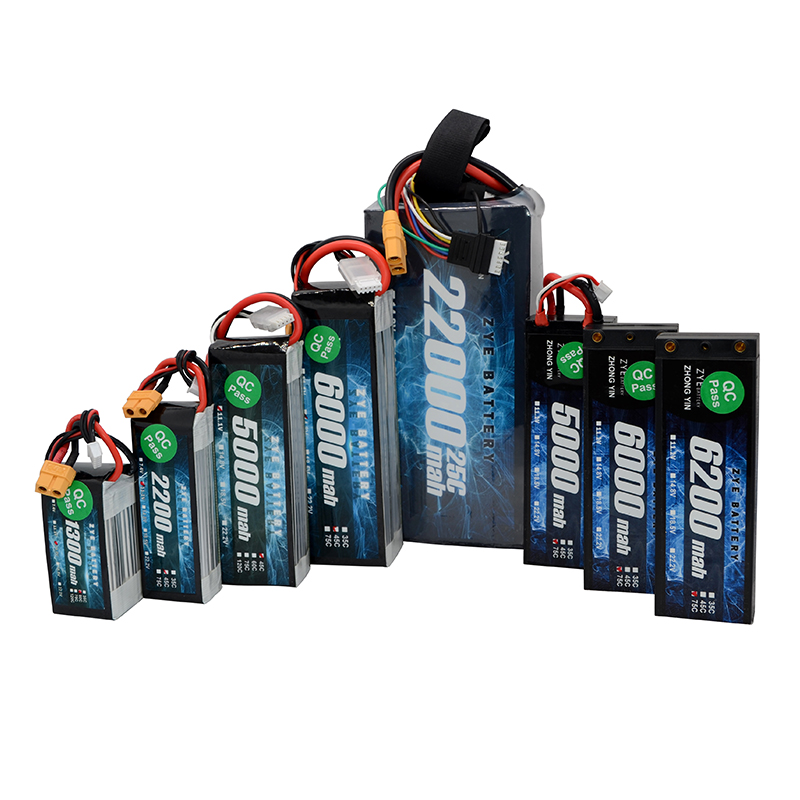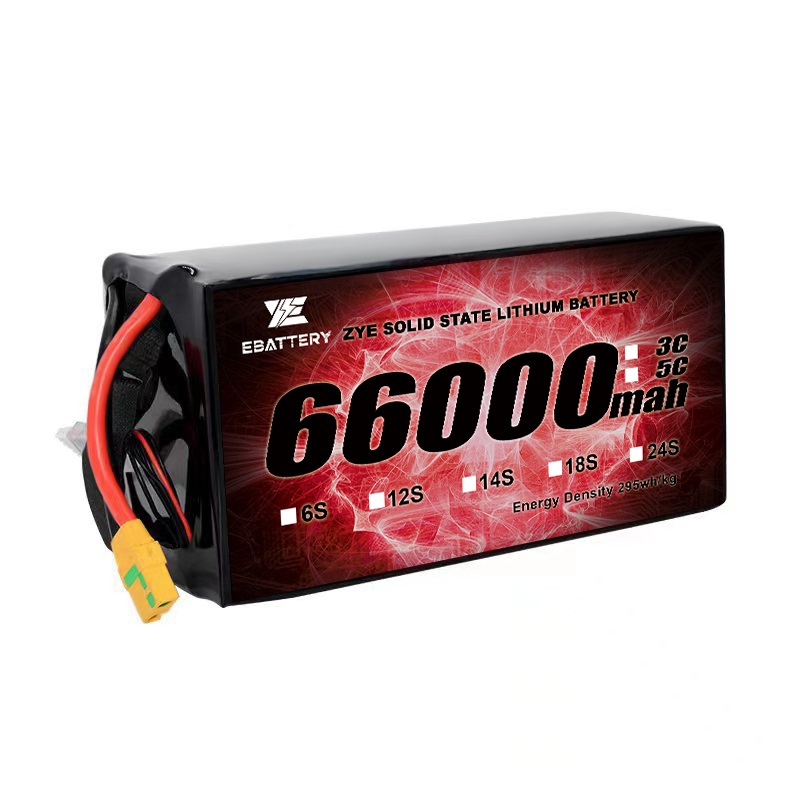How to choose a drone battery
2025-09-05
The Ultimate Guide to Drone Battery Models: From Consumer to Agricultural Drones, Choosing the Right Power Source Means Securing Air Superiority
Faced with the overwhelming variety of battery models on the market, how do you select the optimal power source for your equipment? This article systematically analyzes the core models and technical parameters of batteries for consumer, industrial, and specialty drones.

1. mAh represents battery capacity. Generally, higher capacity means longer flight endurance. However, note that drones have weight constraints—especially in racing categories where victory hinges on fractions of a second—making battery selection critical. Beginners should opt for 1000-1800mAh batteries to avoid excessive weight, which compromises flight performance and maneuverability.
2. S denotes the number of cells in series. A single cell has a nominal voltage of 3.7V. The total battery voltage = number of cells × individual cell voltage.
3. C denotes the discharge rate, commonly available as 25C, 30C, or 35C. For fixed-wing drones, a 20-30C battery suffices, as they don't demand high burst power like FPV racing drones.
4. Price: For competition use, opt for top-tier batteries. However, for recreational pilots prioritizing reliability over premium quality, cost-effective options suffice. Common specifications like 3S 25C 2200mAh offer broad compatibility across many RC aircraft and vehicles.
Choosing Drone Batteries: Safety First
1. Battery Type Determines Flight Range!
First, most mainstream drones on the market use lithium polymer (LiPo) batteries. These are significantly lighter and have much higher energy density than traditional nickel-metal hydride or lithium iron phosphate batteries, enabling drones to fly higher and farther. But did you know? Not all lithium batteries are created equal! New 2025 regulations mandate: All commercial-grade drone batteries must pass UL 2580 certification, ensuring cell stability, short-circuit protection, and overcharge safeguards meet standards.
2. Charger Compatibility = Safety Baseline!
Many assume matching voltage is sufficient—a huge mistake! For example, using a 4S charger on a 3S drone battery (11.1V) can instantly cause overvoltage and cell breakdown, resulting in battery failure or even explosion. Remember this rule: OEM-matched chargers are safest; third-party chargers must carry both CCC and CE certifications. Many modern smart chargers now support automatic battery model recognition.
3. Proper Maintenance is Key to Extending Lifespan!
Many pilots focus solely on flying, forgetting batteries have lifespans. Proper care involves:
- After each flight, let the battery rest at room temperature for 10 minutes before charging.
- Store unused batteries at around 60% charge.
- Avoid extreme temperatures (below 0°C or above 40°C).
Perform equalization charging every 10 flights. This prevents excessive cell voltage differences that increase internal resistance, boosting overall lifespan by at least 30%.

Before selecting a drone battery, first understand the motor's critical operating parameters. Battery compatibility ultimately depends on the motor's performance requirements:
1. Motor Maximum Current: The core metric for evaluating battery discharge capability
Motors generate high currents during full-load operations (e.g., takeoff, rapid acceleration, load-bearing flight). This “maximum current” is typically labeled as “maximum continuous current” or “peak current” in motor specifications and can also be determined through actual testing. The selected battery must consistently deliver this current throughout the entire flight while maintaining a safety margin. It is recommended that the battery's continuous discharge capacity reach 1.2 to 1.5 times the motor's maximum current.
2. Motor Voltage Range: Determines Battery Cell Count and System Voltage Level
The motor's rated voltage dictates the appropriate battery voltage level, commonly referred to as “S-cell batteries.” The battery's nominal voltage must match the motor's rated voltage or fall within its permissible voltage range. Excessive voltage may burn out the motor, while insufficient voltage leads to inadequate power or failure to start properly.
3. Motor Power and Flight Duration Requirements: Key Reference for Battery Capacity
Motor power is determined by both voltage and current. Higher power consumes more energy, consequently requiring greater battery capacity. When selecting battery capacity, consider not only meeting the motor's power demands but also the actual flight duration requirements of the application scenario.
4. Battery Weight vs. Motor Thrust Matching
Battery weight constitutes a significant portion of the drone's total weight. Ensure the total motor thrust (calculate total thrust for multi-motor drones) ≥ 1.5–2 times the drone's total weight (including battery). (Adjust based on flight scenarios; racing drones require higher thrust ratios.) Otherwise, insufficient power will compromise maneuverability and endurance.
5. Battery Type
Most drone batteries utilize lithium polymer (LiPo) cells, offering high energy density and excellent discharge performance, making them suitable for high-power motors.
6. Brand and Quality
Select batteries from reputable brands, as they provide more accurate discharge rate and capacity ratings, better cell consistency, and enhanced safety. Substandard batteries may feature mislabeled specifications, leading to mismatches with motors and posing safety risks.
























































